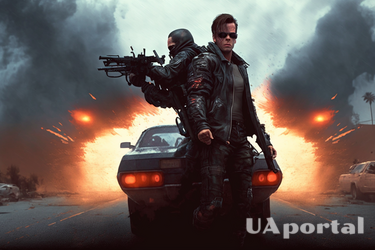The Evolution of Thriller Films: How the Genre Has Changed

UAportal has prepared an analysis of changes in the thriller genre throughout history. This article explores how the evolution of film has shaped the genre, influencing popular culture and captivating audiences around the world.
The era of silent Cinema (1895-1927)
During this period, films were silent and mostly relied on visual effects to tell the story. The thriller genre was just beginning to take shape, with early examples being The Cabinet of Doctor Caligari and Nosferatu. These films laid down many of the conventions of the genre, including dark atmospheres, shadowy lighting, and unexpected plot twists.
However, the lack of sound limited the filmmakers' ability to create tension and suspense. As a result, they began to rely more on visual storytelling to engage viewers.
Read also: Biopics of 2010-15 that Influenced the Genre
The Golden Age of Hollywood (1930-the 1950s)
The Golden Age of Hollywood was marked by the flourishing of the studio system, with studios such as MGM, Warner Bros, and Paramount producing many of the biggest films of the era. During this period, the thriller genre underwent significant changes, with directors such as Alfred Hitchcock and Orson Welles pushing the boundaries of what was possible.
Hitchcock's films such as Psycho and Rear Window featured complex plots, brighter characters, and exciting scenery, while Welles' Citizen Kane revolutionized the use of cinematography and sound. These films established many traditions of the thriller genre that are still used today.
New Hollywood (1960s-1970s)
In the 1960s and 1970s, Hollywood underwent significant changes as the old studio system collapsed and new directors emerged. The thriller genre continued to evolve, with directors such as Stanley Kubrick, Martin Scorsese, and Francis Ford Coppola pushing the boundaries of what was possible.
Read also: How comedy films evolved from silent films to the present day
Kubrick's A Clockwork Orange has aggressive elements, while Scorsese's Taxi Driver explores themes of loneliness and isolation. Coppola's The Godfather reimagined the gangster film, establishing many traditional ideas that are still used today.
Blockbuster era (1980-the 1990s)
The 1980s and 1990s saw the rise of the blockbuster, with films such as Peanuts, Terminator 2 and Jurassic Park becoming massive hits. These films differed in conceptuality, memorable scenery and brighter characters.
They often used the latest effects to create memorable moments, such as the T-Rex attack in "Jurassic Park". While the thriller genre continued to evolve, these films set a new standard for what audiences expected from cinema.
Digital Age (2000s–present)
In the 2000s and beyond, the thriller genre continued to evolve as filmmakers used new technology and techniques to create more immersive experiences. Films like Inception, The Dark Knight, and John Wick pushed the boundaries of what was possible with carefully crafted action sequences, stunning visuals, and complex plots. These films also introduced new themes and ideas, exploring issues such as personality, morality, and the essence of real life.
We will remind you that earlier UAportal prepared a selection of five adventure films released in the period from 2003 to 2008, which conquered viewers all over the world.
If you want to receive the latest news about the war and events in Ukraine - subscribe to our Telegram channel!
